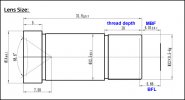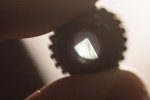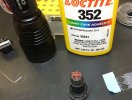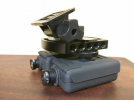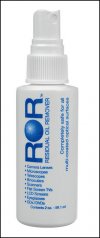It's a common problem that you have to modify the Mobius case to use 3rd party lenses, which usually means widening the hole for the lens barrel or the wider section around the front element.
From memory, the only one I have found so far which does not require a case modification is the 25mm F2.4 from Treeye.
As has been mentioned before, the cases are quite easy to cut back to the desired size. And if you change your mind you can buy a new replacement case fairly cheap. It might be harder to find the original version with the round LED hole though.
I have to disagree with your approach here. Having to modify the case on a Mobius is only a "common problem" if you are in the habit of purchasing lenses that are not compatible with the camera in the first place. While I would certainly be willing to modify the case (or other components such as the threaded lens module barrel) on a Mobius camera if I needed to (and I have), the goal should be to install compatible lenses in the first place. I think it's fine to modify a camera if you need to for a specific lens but I believe doing so should be the exception, not the rule.
A week ago in this thread
I tried to make the case that it is best to order lenses from a knowledgeable vendor who is able to provide all the technical information you need to make an intelligent lens buying decision.
The consequences of buying from a vendor who tells you absolutely nothing about what they are selling you result in the kind of experience
@jackalopephoto reported yesterday where he says, "
But the 12mm lens and the 8mm lens can't focus on the Mobius. The housing blocks them before they can screw in far enough. You would have to modify the case". This is exactly the kind of outcome I was cautioning about.
If you want to install an aftermarket lens in your camera, the first thing you need to do is measure the thread depth of the lens module on your camera. In the case of the Mobius it is 12.5mm. Then add the distance from the lip of the module to the front of the camera's case. Now you know how long the threaded barrel on the new lens needs to be in order for it to screw into the barrel as far as required. As long as the lens is narrow enough but with a long enough threaded barrel, you don't need to worry about the size of the hole in the case.
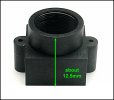
I first encountered and learned about this issue several years ago when
installed a different lens into my old G1WH. The first three lenses I tried wouldn't work because of the thread depth on both the lens and the module barrel. While I did have to make an alteration the camera's housing, even without the front of the case even on the camera three different lenses would not work at all because I couldn't screw them far enough into the barrel to achieve focus because the threaded part of the lens barrels were not long enough. They couldn't screw in far enough for those particular lenses BFL requirements. I discovered that on many M12 lenses the threads do not go all the way up the full length of the barrel and of course some lenses don't have very long barrels, so now when I consider an alternative lens for a camera that's one of the first things I look for.
The basic (installation) specs to look for when shopping for a lens are BFL, (back focal length) MBF (minimum back focus), and lens thread depth. These specs work in concert with the module's threaded lens barrel. Obviously the specific size sensor and all the other specs are important to know but the BFL, MBF and thread depth are the specs you need to know regarding whether the lens can even be installed and focused. This is critical. If these numbers are not right, look elsewhere for an appropriate lens to fit your camera; there are literally hundreds of lenses to chose from. The way I see it, if the specialized lens you purchased requires you to permanently alter the housing of the camera, then you've probably chosen the wrong lens. Obviously, if this happens to be the
only lens that will achieve the desired results, that's another story.
Treeye and Peau Productions are two examples of professional lens vendors who go out of their way to provide buyers with everything they need to know
before purchase so that you end up with a
compatible lens that will meet your requirements.
Peau Productions, as an action camera specialist even goes to the trouble of categorizing many of their lens offings according to their compatibility to specific cameras and like Treeye they publish all available lens specifications.
Here for example, is the information Treeye provides for the 6mm ƒ/1.2 Starlight telephoto lens. Not only do they provide all the necessary specifications to know if the lens meets your requirements they also provide a technical drawing of the lens so you know the exact physical measurements of the lens. This way you you know the thread depth on the lens along with everything else about how it will fit your camera
before purchasing.
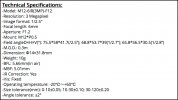
I've labeled the required fitting specs in blue.
